
伤口世界
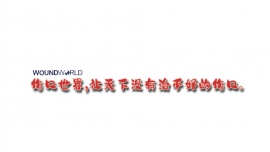
- 星期一, 20 5月 2024
改良水胶体敷料对无痛结肠镜检查病人 造口周围皮肤的影响
贾利军,贺亚楠,李向瑞,吴 丽,袁雅卓,王贝贝,张淑利
Effects of hydrocolloid dressing on the peristomal skin in patients undergoing painless coonoSCOD1JA Liiun, HE Ya' nan, Ll Xiangrui, WU Li, YUAN Yazhuo, WANG Beibei, ZHANG Shuli(The First Affiliated Hospital of Zhengzhou University, Henan 450052 China)
Abstract Obiective: To explore the effects of modified hydrocolloid dressing ( HCD) on peristomal skin in painless colonoscopy patients.
Methods: A total of 64 patients with a stoma who underwent painless colonoscopy in the First Affiliated Hospital of Zhengzhou University from January 2022 to December 2022 were selected as the study subjects, and patients were divided into modified HCD application group(group H) and control group (group C) by random number table method,32 cases in each group Before the colonoscopy, group C implemented routine care, using a non-woven hole towel to cover the patient's abdomen; group Hused modified HCD(3M) to apply to the peristomal skin and perform colonoscopy. The grade of peristomal dermatitis(assessed by international wound evaluation standards), the percentage of peristomal skin moisture, the pH of the peristomal mucosa and the colony forming units (CFU) count of peristomal skin were observed
Results: After the intervention. the grade of peristomal dermatitis in group H was significantly better than that in group C, the CFU was significantly less than that in group C, and the percentage of skin moisture around the stoma was significantly lower than that in group C(all P<0.001), There was no significant statistical difference in skin temperature, and pH of the peristomal skin between the two groups after the intervention(P>0.05).
Conclusion: Modified HCD can provide reliable peristomal skin protection during painless colonoscopy.
Keywords hydrocolloid dressings: painless colonoscopy: peristomal dermatitis: potential of hvdrogen : colony forming unit
摘要 目 的:探 讨 改 良 水 胶 体 敷 料 (hydrocolloid dressing, HCD)对 无 痛 结 肠 镜 检 查 (painless colonoscopy)病 人 造 口 周 围 皮 肤 (peristomal skin)的影响。方法:选取2022年1月—2022年12月在郑州大学第一附属医院行无痛结肠镜检查的64例造口病人作 为研究对象,采用随机数字表法分为改良 HCD应用组(H 组)和对照组(C组)各32例。在结肠镜检查前,C组实施常规护理,使用 无纺布洞巾覆盖病人腹部;H 组在C组基础上采用改良 HCD(3M)粘贴于造口周围皮肤,实施结肠镜检查。观察两组病人造口周围 性皮炎分级(采用国际伤口创面评价标准评估)、造口周围皮肤水分百分比、造口周围黏膜酸碱度(pH 值)和造口周围皮肤菌落计 数。结果:干预后,H 组病人造口周围性皮炎分级明显优于 C组,菌落计数明显少于 C组,造口周围皮肤水分百分比明显低于 C组 (均P<0.001);干预后两组病人造口周围皮肤黏膜酸碱度和温度比较差异无统计学意义(P>0.05)。结论:在无痛结肠镜检查期 间,改良 HCD可为病人提供可靠的造口周围皮肤保护作用。
关键词 水胶体敷料;无痛结肠镜检查;造口周围性皮炎;酸碱度;菌落形成单位 doi:10.12104/ji.ssn.1674-4748.2023.16.004
作者简介 贾利军,主管护师,硕士研究生在读,单位:450052,郑州大 学第一附属医院;贺亚楠、李向瑞、吴丽、袁雅卓、王贝贝、张淑利(通讯 作者)单位:450052,郑州大学第一附属医院。 引用信息 贾利军,贺亚楠,李向瑞,等.改良水胶体敷料对无痛结肠镜 检查病人造口周围皮肤的影响[J].全科护理,2023,21(16):2176-2179.
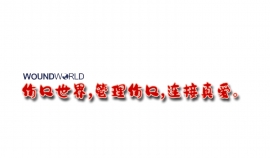
- 星期五, 17 5月 2024
注射透明质酸致眶隔异物结节1例
注射透明质酸致眶隔异物结节1例
刘畅 王太玲 中国医学科学院 北京协和医学院 整形外科医院整形三科,北京100144通信作者:王太玲,Email:该Email地址已收到反垃圾邮件插件保护。要显示它您需要在浏览器中启用JavaScript。基金项目:中国医学科学院北京协和医学院整形外科医院院所基金(YS202010)DOl:10.3760/cma.j.issn.1671-0290.2023.05.019
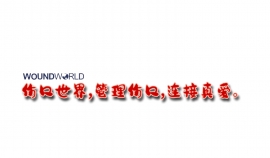
- 星期五, 17 5月 2024
注射溶脂针引起人为脂膜炎1例
杨力1林新瑜’王超群’刘小瑜!眉山市人民医院皮肤科,眉山 610000;四川省医学科学院四川省人民医院皮肤科,成都 641000
通信作者:林新瑜,Email:该Email地址已收到反垃圾邮件插件保护。要显示它您需要在浏览器中启用JavaScript。基金项目:2021年四川省卫生健康委员会医学科技项目(21PI087)DOl:10.3760/cma.j.issn.1671-0290.2023.04.019
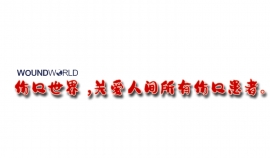
- 星期六, 11 5月 2024
微针治疗斑秃1例
蒋宙男1 戚吉妮!徐伟力’周玥3 张菊芳!浙江中医药大学第四临床医学院,杭州 310053;2杭州市第一人民医院城北院区整形外科,杭州 311203:解放军联保障部队第九〇三医院整形外科,杭州 310013:浙江大学医学院附属杭州市第一人民医院整形外科,杭州 310006通信作者:张菊芳,Email:该Email地址已收到反垃圾邮件插件保护。要显示它您需要在浏览器中启用JavaScript。:10.3760/cma.j.issn.1671-0290.2023.02.021
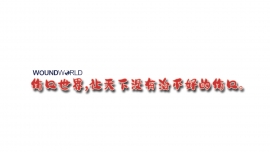
- 星期五, 10 5月 2024
臀部巨大浅表脂肪瘤样痣切除后旋转皮瓣修复缺损1例
刘鹏林1 陈天丽2 张立泽1 尤雯丽1 赵刚1
1青岛大学附属医院肛肠科,青岛 266555;2青岛市黄岛区中心医院皮肤科,青岛 266555
通信作者:刘 鹏 林,Email:该Email地址已收到反垃圾邮件插件保护。要显示它您需要在浏览器中启用JavaScript。;赵 刚,Email:该Email地址已收到反垃圾邮件插件保护。要显示它您需要在浏览器中启用JavaScript。
DOI:10.3760
/cma.j.issn.1671-0290.2023.02.022
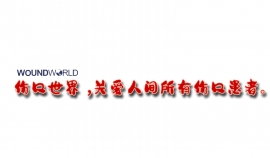
- 星期四, 09 5月 2024
软组织填充剂致面部异物肉芽肿1例
李宇 万若愚 陈宇凌 董薪 李利
四川大学华西医院皮肤性病科,成都 610041
通信作者:李利,Email:该Email地址已收到反垃圾邮件插件保护。要显示它您需要在浏览器中启用JavaScript。
基金项目:四川大学华西医院学科卓越发展135工程项目基金资助项目(ZY2016106)
DOI:10.3760/cma.j.issn.1671-0290.2023.05.018
